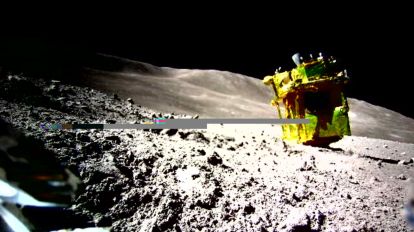The Japan Aerospace Exploration Agency (JAXA) announced on Monday that after reestablishing contact with the lunar lander, Japan’s SLIM spacecraft has restored power more than a week after it ran out of juice due to its solar panels being at the incorrect angle.
The Smart Lander for Investigating Moon(SLIM), mission’s solar panels were angled incorrectly, preventing it from producing electricity after it touched down on the moon on January 20. After losing communication with JAXA, the spacecraft appeared to have shut off after running on its batteries for a while.
The space agency re-established communication with SLIM late on Sunday and the spacecraft was likely able to generate power because of a change in the sunlight’s direction.
The spacecraft’s multi-band camera scanned the environment around it to examine rocks of interest located around the landing site. The image shows a landscape image created by synthesising 257 low-resolution monochrome pictures. Research teams at JAXA used the image to assign a nickname to each of them with the intent of communicating their relative sizes with the names.
JAXA has not announced the date when SLIM’s operations on the moon will come to an end. Just like India’s Chandrayaan-3 before it, the SLIM lander was not designed to survive a lunar night. The next one begins on Thursday.
With the success of the SLIM mission, Japan became just the fifth country to soft-land a spacecraft on the moon. The others are the United States, Russia, China and India. Japan would have made it to the list earlier if the privately led Hakuto mission had made a landing. But the mission, developed by Tokyo-based ispace, crashed onto the lunar surface in April 2023.
Russia’s Luna-25 was also set to make a soft landing on the moon, but it developed problems before moving into a pre-landing orbit and smashed into the lunar surface on August 29 last year.





